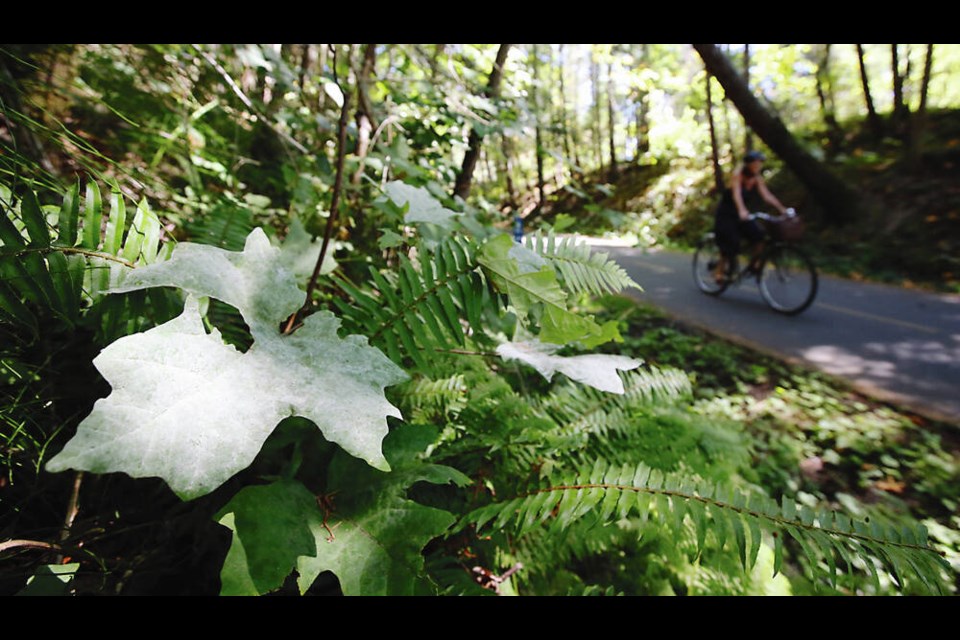Vast tracts of big leaf maple trees across the Island are turning a white-silver colour this summer.
But while alarming, it’s not a cause for concern in the long term, according to registered professional botanist Andy MacKinnon.
The leaves and stems of maples are being hit with a powdery mildew — a fungal parasite — that is thriving amid humid and warm conditions, and the spores are being spread by consistent breezes, MacKinnon said.
“It’s an inconvenience for the maple, but it will not cause defoliation or any permanent damage,” he said.
MacKinnon said the fungus is widespread across the Island and parts of the Lower Mainland this summer.
“The hot weather has maples feeling some stress, and can be susceptible to these parasite fungi,” he said.
“I’ve seen it widely distributed because the conditions have been good for the dispersal of spores.”
People using the Galloping Goose trail and parks in the Capital Regional District have been noticing the fungal spread for the past several weeks, he said.
In a statement, CRD Parks said powdery mildew is a common problem of maple trees, and trees in general, and is caused by a range of different fungi.
“The underlying fungus is different for different species, but all these fungi cause the growth of a white mould on the tree’s leaves and stems,” said CRD Parks.
“Though this mildew can be unsightly, the damage it causes a maple tree is minimal.”
The superficial, fine-powder-like mildew is caused by Erysiphales fungi, especially Podosphaera xanthii. Infection can happen year round, but the fungus seems to favour moderate temperatures and high humidity, similar to greenhouse conditions. All maples are susceptible, and other plants can also fall victim.
MacKinnon warns people against touching the silvery leaves or getting the fungus on their clothing as it can help further the spread.
He said the people he’s talked to have been concerned.
“Maples are our most common deciduous trees. It’s a distinctive tree because they can be large and the leaves are big. They make up a large part of our natural flora, and people understandably can be upset when they see this.”
But rest assured, he said, the trees will be OK — and the leaves will still turn their usual beautiful colours in the fall.
>>> To comment on this article, write a letter to the editor: [email protected]



